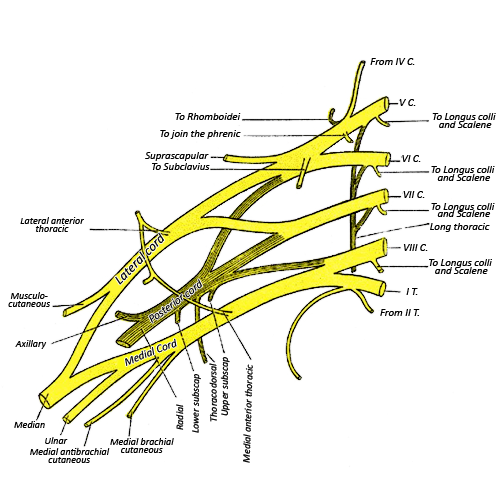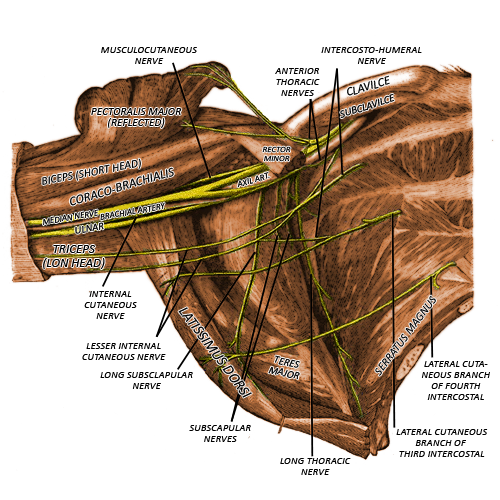Overview
The musculocutaneous nerve branches from the lateral cord of the brachial plexus. It supplies the anterior
compartment of the arm, and sensation to the lateral forearm.
Gross Anatomy
The musculocutaneous nerve (C5-7) is a terminal branch of the lateral cord. It supplies the flexor compartment of the arm i.e. biceps brachii (both long and short heads, the muscle acts as a supinator of the forearm and flexor of the elbow), coracobrachialis (adducts and flexes the shoulder) and brachialis (the primary elbow flexor).

It initially follows the course of the third part of the brachial artery and then pierces the
coracobrachialis muscle, 3-8cm distal to the coracoid process. It then
continues down the arm, behind biceps and in front of brachialis,
giving branches to both muscles as it descends. The nerve then continues down
and pierces the fascia attaching to the lateral aspect of the biceps brachii
tendon, 2 cm above the elbow. It then continues distally
where it terminates as the lateral cutaneous nerve of the forearm.

Clinical Anatomy
Quick Anatomy
Key Facts
Developmental precursor- Alar and basal plate of C5-C7 spinal nerves
Origin-
C5-C7
Branches-
Lateral cutaneous nerve of the forearm.
Muscles supplied- coracobrachialis, bicep brachii, brachialis
Dermatome-
Lateral forearm
Aide-Memoire
The biceps comes to mind when we
thing of muscular, so the musculocutaneous nerve can be remembered as supplying
the compartment of the definitive muscle i.e. biceps brachii.
The name musculocutaneous also
implies that the nerve has a muscular role, and a sensory role as the lateral
cutaneous nerve of the forearm.
Summary
The
musculocutaneous nerve is a branch of the brachial plexus. It supplies the
anterior compartment of the arm, and sensation to the lateral forearm.
